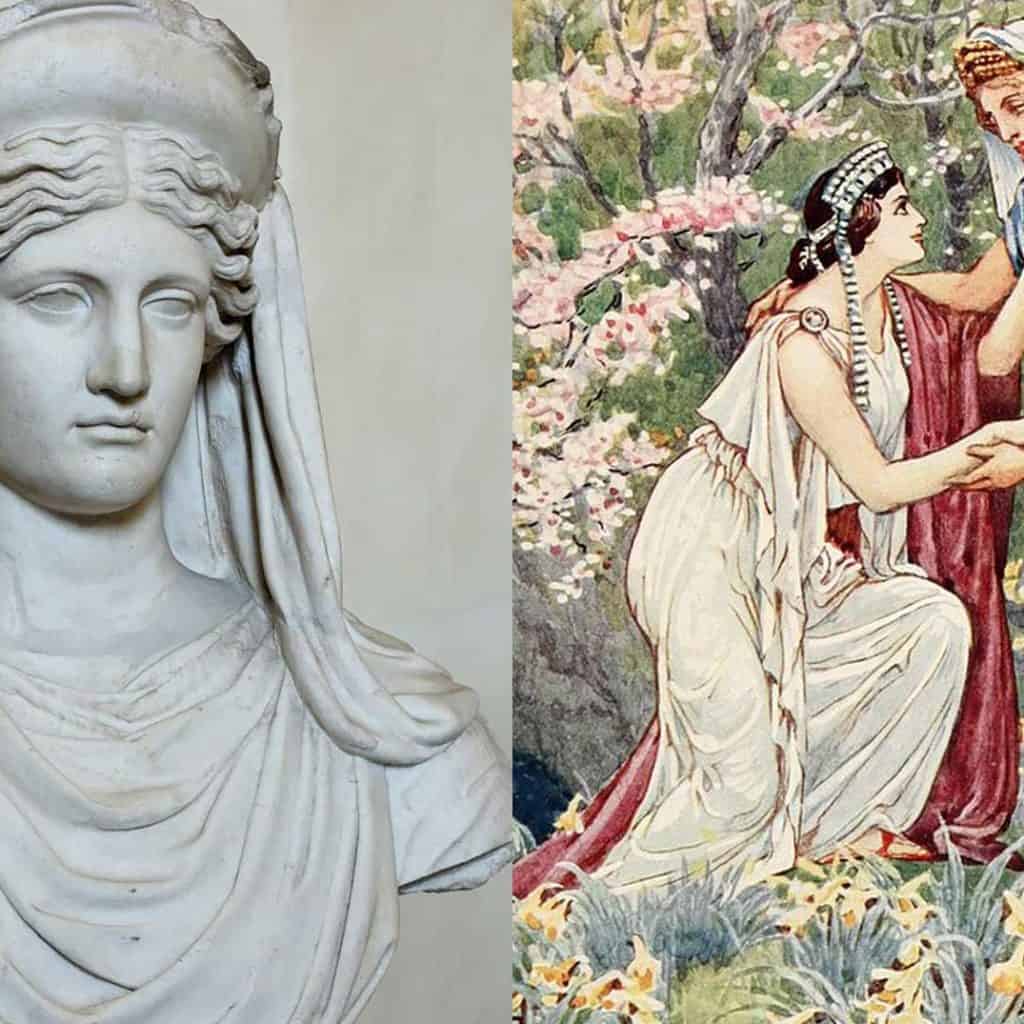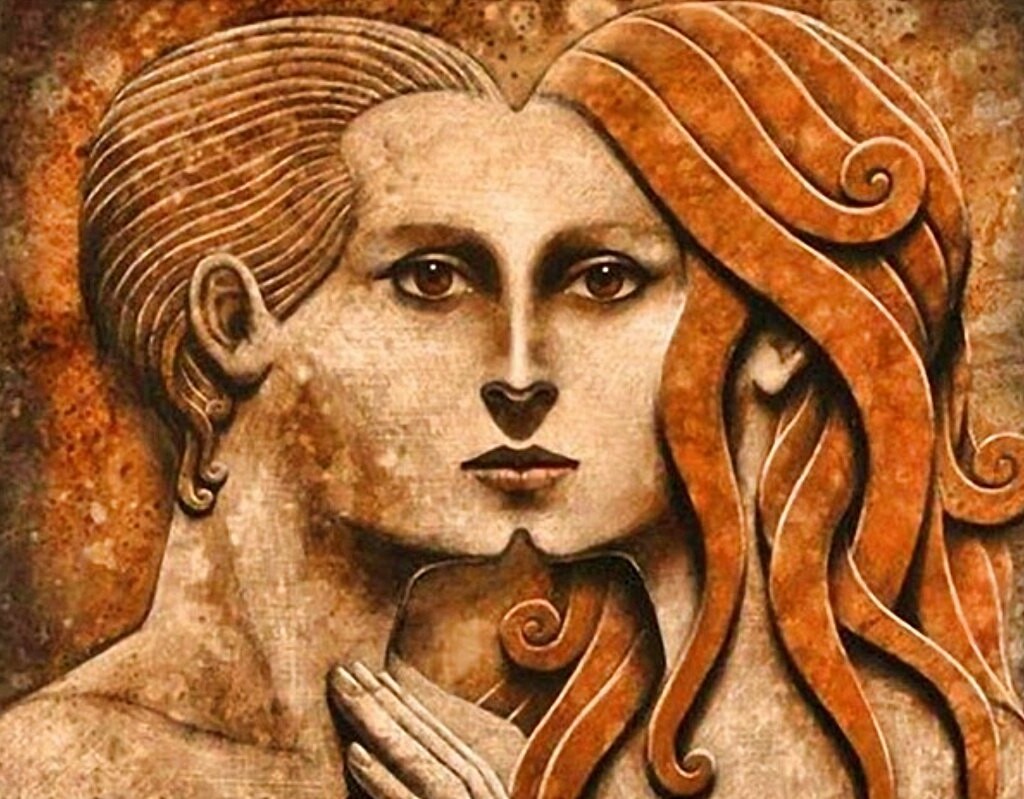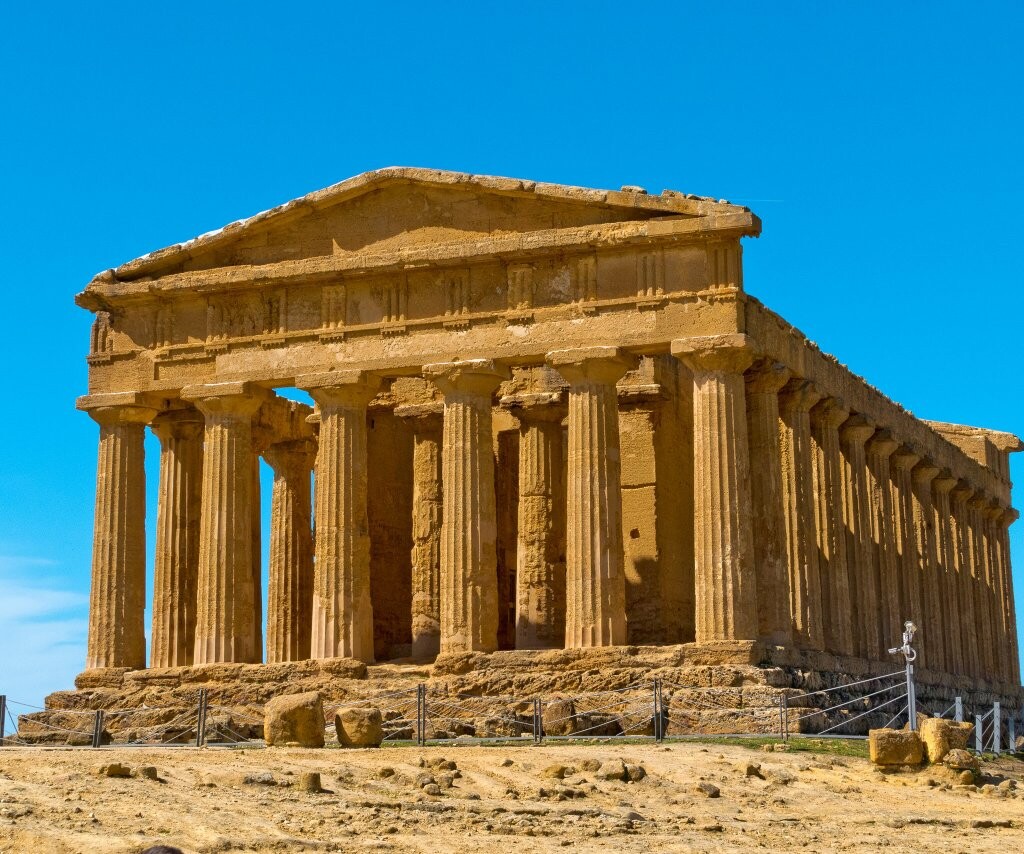The mysteries of Eleusis and the cult of Demeter are one of the most interesting and mysterious aspects of ancient Greek religion and culture. For centuries, these secret ceremonies at Eleusis attracted people from all over Greece seeking a deeper connection with the gods and the afterlife.
The Mysteries of Eleusis: The Cult of Demeter and Persephone in Ancient Greece
Eleusis is a village near Athens where there was a college of initiates who practiced and jealously guarded the mysteries of the cult of Mother Nature, represented by Demeter and her daughter Persephone.
These mysteries included practices, rites and ceremonies celebrated on certain dates to honor the sacred products of Mother Nature. The Roman Empire took authority over the place, but a priest managed to rescue the essence of the mysteries and keep them as sacred documents and relics.
The story of its greatness was allowed by a hierophant to preserve its history. The city was agricultural, producing wheat and barley.
The mysteries were based on the myth of Demeter and Persephone, in which Demeter froze the earth in search of her daughter and taught the secrets of agriculture to Triptolemus until his reunion with Persephone.
An agreement allowed Persephone to remain with Hades for a third of the year. Eleusis became an annual meeting place for worship and the practice of the mysteries kept secret by her followers.
Eleusinian Mysteries

The Eleusinian Mysteries were a celebration in honor of the goddess Persephone, who represented the return of life and plants to the earth in spring. Persephone had eaten seeds underground and her rebirth symbolized the rebirth of all plant life.
Celeus was one of the original priests of the goddess Demeter, along with Diocles, Eumolpus, Triptolemus and Polyxenus. Triptolemus, son of Celeus, learned the art of agriculture from Demeter and taught it to all of Greece.
Types of Mysteries: Major and Minor Mysteries
The minor mysteries took place in March and consisted of the purification of the candidates for initiation and the sacrifice of a pig to Demeter.
The major mysteries took place in September and lasted nine days, with the rites beginning on September 14 with the transfer of sacred objects from Eleusis to the Eleusinion in Athens.
On the 20th and 21st the initiates entered a room called the Telesterion where they were shown the sacred relics of Demeter.
The priests declared the beginning of the rites on the 15th and the ceremonies included a procession that began in Athens on the 16th and ended in Eleusis on the 19th.
During the procession, the participants shouted obscenities and names of gods such as Yambe or Baubo and Yaco. Finally, there was a day of fasting in Eleusis in memory of Demeter and a special drink of barley and pennyroyal called zycon was taken to break the fast.
The entrance to this room was the most reserved part of the mysteries and those who were initiated were forbidden to ever speak of the events that took place there.
The Categories of Participants in the Eleusinian Mysteries and their Initiation Process
There were four categories of participants in the mysteries, the priests, the priestesses and the hierophants.
The initiates who participated for the first time, those who had participated before and qualified for the last category and the others who had reached epopteia or revelation, who knew the secrets of the greatest mysteries of Demeter.
The process of initiation into the mysteries included entry into the Hall of Telesterion, where the initiates were shown the sacred relics of Demeter.
There are two modern theories about the climax of the mysteries, one claiming that the priests revealed the visions of the Sacred Night, while the other suggests that the experiences were internal and caused by a psychoactive ingredient contained in the kykeon.
The section in the Telesterion was followed by the Pannychis, a feast accompanied by dances and the sacrifice of a bull. Finally, on September 23, the Mysteries ended and all the participants returned home.
However, a large part of the Mysteries was never written down, so many of their details remain unknown. For example, the contents of the sacred objects, such as the box chest and the Kalathos basket, were known only to the initiated and will probably never be known to the general public.
Relationship between the Mysteries and Greek mythology, including the legend of Demeter and Persephone.
This legend not only serves to explain the cycle of the spring and winter seasons but also contains several mysteries. One is why Persephone was abducted by Hades. Another mystery is why Demeter was so desperate to find her daughter.
These mysteries have been analyzed and discussed for centuries and have given rise to various interpretations. Some believe the legend represents the passage from childhood to maturity, while others believe it represents the passage from life to death.
It also contains several other mysteries that scholars have tried to unravel over the years.
Influence of the Mysteries on Ancient Art and Architecture
The Mysteries were intended to help participants understand the meaning of life and death and their influence can be seen in ancient architecture and art.
Temples dedicated to the Mysteries were filled with sculptures and reliefs depicting gods and goddesses associated with the Mysteries, such as Demeter and Persephone. These images were often used to explain the mysteries to those who could not see them in person.
Sculptures and reliefs were also used to remind the participants of the mysteries of the concepts learned during the ritual.
Ancient artists and architects also used the mysteries as a source of inspiration for their work. For example, the sculpture of Demeter and Persephone on the Parthenon in Athens was used to remind viewers of the ritual of the Eleusinian Mysteries.
In addition, reliefs with mystical themes can be found in many ancient Greek temples, such as the Temple of Apollo at Delphi. These reliefs could tell stories about the mysteries or simply present an image of the gods associated with them.
The ancient mysteries had a profound influence on ancient art and architecture. Sculptures and reliefs depicting the gods associated with the mysteries were often used to explain the meaning of the mysteries to those who could not attend them.
Ancient artists and architects were inspired by the Mysteries to create their works, resulting in beautiful sculptures and reliefs with mystical themes that we still find in ancient Greek temples.
The Relationship of the Eleusinian Mysteries to Other Ancient Religions and Cults
These cults had a great influence on other ancient religions, especially the cult of Isis in Egypt.
The Isis cults date back to ancient Egypt, where the goddess was worshipped as the goddess of nature, the mother of all gods and the protector of the dead. Some of the teachings and rituals of the Eleusinian Mysteries were also present in the Isis cult.
These similarities included the worship of the goddess as the mother of all gods, as well as the belief that humans could find happiness through devotion to the goddess.
Isis cults spread beyond ancient Egypt to other parts of the Mediterranean, including Greece. It is believed that the Eleusinian Mysteries influenced the Isis cult, as many of the rituals and teachings were similar.
For example, the Eleusinian Mysteries included an initiation ceremony that was believed to help the initiates reach a state of perfection. This ceremony was also reflected in the cult of Isis, where initiates were initiated into the mysteries of the goddess.
In addition to rituals and teachings, the Eleusinian Mysteries also influenced the art and architecture associated with the cult of Isis.
The goddess was portrayed as a woman with eagle wings, a symbol of immortality and was often depicted standing on a crescent moon. This image was a representation of immortality, an important theme for both the Eleusinian Mysteries and the cult of Isis.
Ultimately, the Eleusinian Mysteries are believed to have influenced the cult of Isis in Egypt and elsewhere in the Mediterranean. The rituals and teachings of the Eleusinian Mysteries were present in the cult of Isis, as were some elements of art and architecture associated with the goddess.
This demonstrates the great influence that the Eleusinian Mysteries had on the cult of Isis and the Egyptian religion.
Read more
- We are like Persephone — The Persephone Myth
We are bipolar, like Persephone and we love to oscillate between the two poles until we reach the neutral point, the point of balance, or the point of emptiness, where we experience peace and tranquility.




